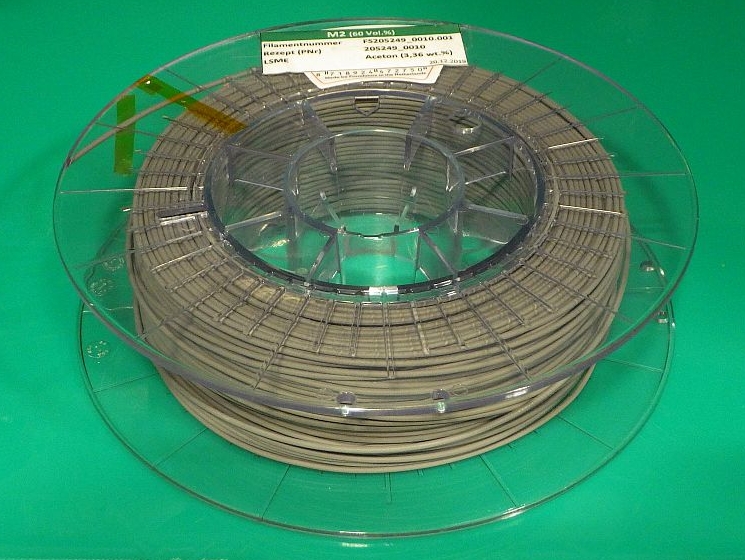In the metallic Fused Filament Fabrication (FFF) process, the material to be processed is stored on spools as filament (= wire) with a typical diameter of 1.75 mm or 2.85 mm. In this process, the filament consists of metal powder and a polymer mixture that melts at 150 °C - 200 °C. During the process, the filament is fed to a hot nozzle in the so-called print head.
Here, it is melted and extruded through the nozzle opening of 0.25 mm - 1 mm. The extruded filament material is deposited along printing paths according to the target geometry. After a layer has been finished, the build platform can be lowered and the next layer is applied. This process is repeated until the part is complete. The printers have 1, 2 or up to 4 nozzles and can, therefore, print up to 4 different materials in parallel (e.g. component material, release layer, soluble support material).
The printed part is a so-called green part, consisting of the metal powder and the polymer mixture. In a further processing step (debinding) part of the polymer mixture is removed from the component. This is followed by a heat treatment step in which the remaining polymer material is burned out and the component shrinks to 95 - 99 % of the materials relative density.
 Fraunhofer Institute for Manufacturing Technology and Advanced Materials IFAM
Fraunhofer Institute for Manufacturing Technology and Advanced Materials IFAM
